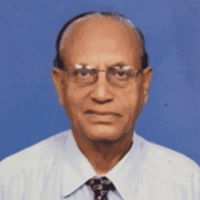[ad_1]
Hyderabad: The All India Majlis-e-Ittehadul Muslimeen (AIMIM) president Asaduddin Owaisi shared a recent study that reports nearly 1,79,147 Muslim students dropped out of higher studies, an 8 percent decline from 2019-2021.
The report – All India Survey on Higher Education 2020–21 – by the Union Ministry of Education, stated that this decline has been observed not in states with higher population density but in smaller states as well.
Blaming poverty and discrimination for the decline of Muslim student enrollment, Owaisi said that the current Narendra Modi-led Central government’s policies on education have only made the situation worse by scrapping various fellowships such as MANF (Maulana Azad National Fellowship).

“Poverty & discrimination have barred Muslims from accessing higher education Add to this Modi govt removing even few support systems for minorities. In Karnataka, they scrapped 4% quota for poor Muslims. They’ve removed or restricted fellowships & scholarships for minorities,” he tweeted.
In December last year, the Centre decided to discontinue the MANF from 2022-23 for minorities as according to them, the scheme overlaps with various other fellowship schemes for higher education.
In March, the Centre tossed off four percent of the Muslim reservation and moved the community into the 10 percent Economically Weaker Sections (EWS).
Without taking any names, Owaisi said that neither the secular parties nor Hindutva ideology are willing to accept Muslims as part of the society.
“Neither secular parties nor Sanghis is willing to accept that Muslims need reservations & scholarships. Not on the basis of religion but on the basis of backwardness. Forcing Muslims to live impoverished & uneducated lives is forcing them to live as second-class citizens,” he tweeted.
The decline in Muslim students, according to the report, has been observed in states with higher population density as well as smaller states.
The highest Muslim student decline was reported in Uttar Pradesh with 36 percent, followed by Jammu and Kashmir at 26 percent, Maharashtra at 8.5 percent, Tamil Nadu at 8.1 percent, Gujarat at 6.1 percent, Bihar at 5.7 percent and Karnataka at 3.7 percent.
Only Tamil Nadu witnessed a rise in Muslim student enrollment.
The report said that other minority communities such as Dalits, Adivasis and OBCs (Other Backward Classes) have reported an incline of 4.2 percent, 11.9 percent and 4 percent, respectively compared to 2019-20.
The upper caste also reported an increase in the number of student enrollment with a growth rate of 13.6 percent.
[ad_2]
#Hindutva #policies #Owaisi #1.8L #Muslims #opt #higher #studies
( With inputs from www.siasat.com )









